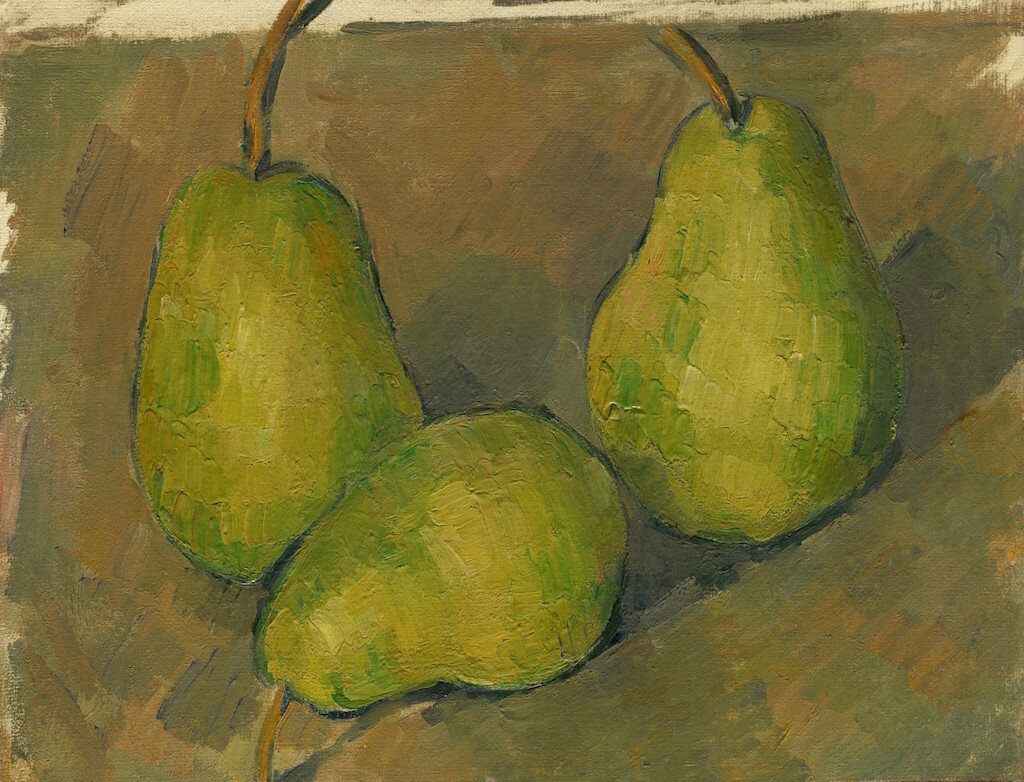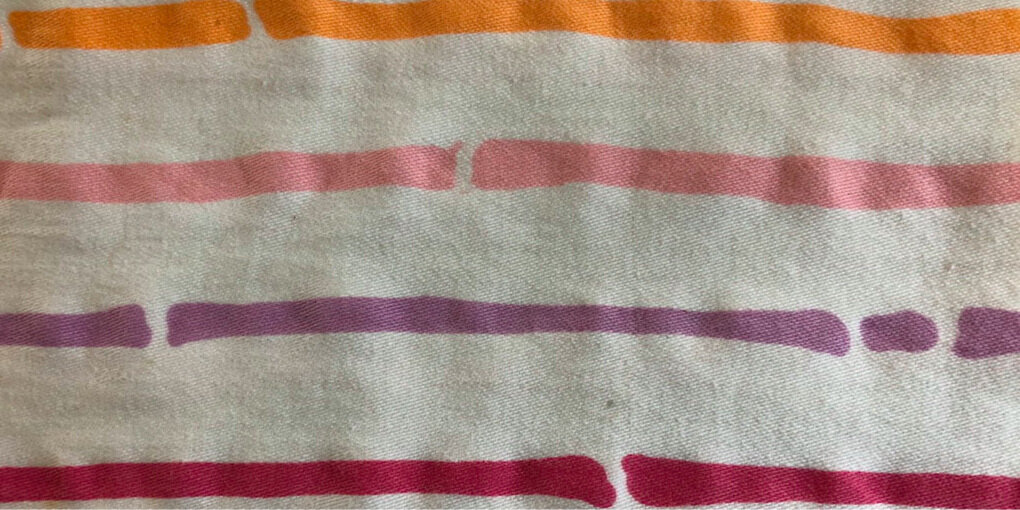In the book How To Do Nothing: Resisting the Attention Economy, author Jenny Odell suggests a thought exercise disguised as an art project, which coincidentally, is particularly relevant to the drought that much of the country is in right now, including Minnesota. She suggests putting a small jar outside where you live in order to collect a bit of rainwater next time it rains. Then use that rain water with watercolor paints, cheap from the drugstore, to paint a picture and hang it somewhere you can see it. Or even just sit the filled jar on a windowsill. Odell explains that the reason for this recommendation—apart from the fact that it just may be fun—is to call one's attention to the fact that the rain that falls in our backyards comes from water sources far away from where we live. Water for rain can travel for many miles in "atmospheric rivers." The atmospheric river known as "The Pineapple Express," for example, carries water from the tropics to Western California. I had no idea. Around here, we've had very little rain for the last three months, but a half inch may fall in the next 24 hours. I'm going to put out a little jar and paint a picture from what comes.
(Odell's book, by the way, is about a broader topic than where our rain comes from, and I recommend it. She challenges readers to consider how social media and other media channels can so thoroughly capture our attention, thereby preventing us from directing our attention to those matters to which we want and need to give our attention. The above project is fun and thought-provoking, but the core of the book is here.)
Mary Peelen and Quantum Heresies: On The Eating of a Pear
Back in March I listened to Zoom episodes of the Madeleine L’Engle Seminar “Poetry, Science and the Imagination,” produced by Image and hosted by Brian Volck, every Wednesday over the lunch hour. All five episodes were wonderful, but I was particularly intrigued with Mary Peelen. A science-minded writer, although not a scientist, Peelen has written a book of poems called Quantum Heresies, which I ordered soon after the episode. Her poems are loaded with reflections on chaos theory, parabolic arcs, chromosomes, supernovas, gravity, algebraic variables, and a myriad of other images that become metaphors for life.
In the poem titled “One,” she writes of a pear. An ordinary pear.
When I come to you
offering one small green pear,
I’m asking you to believe in
every green there is,
at every hour.
The whole tree.
This past year we’ve been eating a lot of pears and until reading this poem I never once thought about the trees from which they came. Do I even know what a pear tree looks like? In what town did the trees grow? What state? What did the field of pear trees look like? Each pear existed and grew on a specific branch on a specific whole tree in a specific location under a specific square of sky and was picked by a specific set of human hands belonging to a specific person and packed into a specific box before being loaded onto a specific truck and on and on before it finally arrived at my house and was bitten into by me.
The thought exercise may seem inconsequential, but it does open up a point of wonder, a point of connection to a world beyond my appetite, my refrigerator, my grocery store. Multiply this exercise by all the different things you eat during the day—an egg, an onion, a steak perhaps—and the world rapidly expands yet keeps one in a web of provision.
Two small green pears are now sitting on my kitchen counter. While waiting for them to soften a bit before eating, I’m wondering where they’ve been.
~~~
[Photo: “Three Pears” by Paul Cézanne; copyright free via the National Gallery of Art]
Glory to God
Please do click on this photo and listen to the Saint Paul Chamber Orchestra singing "Glory to God" from Handel's Messiah.
Here are the lyrics:
Glory to God!
Glory to God in the highest,
And peace on earth.
Glory to God!
Glory to God! Glory to God in the highest,
And peace on earth.
Goodwill toward men.
Glory to God!
Glory to God in the highest,
And peace on earth.
Goodwill toward men.
Goodwill.
Glory to God!
Glory to God in the highest!
On the corner of 38th and Chicago, Minneapolis
On the same day here in Minneapolis, Memorial Day 2020, my mother died of Covid infection and George Floyd was killed by police. It took about 6 weeks for me to sufficiently steady the mix of grief inside before I could make the pilgrimage to 38th St and Chicago Ave where Floyd was killed, just a few miles from where I live. Yes, there were banners of outrage and memorial painted across outside walls. Yes, there were flowers heaped at the corner of his death. Yes, the intersection’s core was a growing ad hoc monument to the mattering of Floyd’s life and black lives. But there on the quieter northwest side of the intersection was a garden someone had started, with dirt and mulch and plants of all varieties right along the edge of Chicago Ave, right where the tires of a thousand and one cars have splashed through standing water and where a thousand and one cigarette butts and candy wrappers have in the past been tossed. Into that garden, someone had placed painted rocks, and the rocks spoke of beauty and hope in the midst of grief of multiple varieties.
The Peace of Wild Things / Wendell Berry
The Celtic Daily Prayer (vol 2) included this poem by Wendell Berry in one of the recent daily readings. These last couple weeks I've been buoyed by many things, not the least of which is the coming of spring, the greening and the warming of the world. So when I read this poem, it felt to be just the right thing to read that day. May it be so for you today.
The Peace of Wild Things
When despair for the world grows in me
and I wake in the night at the least sound
in fear of what my life and my children's lives may be,
I go and lie down where the wood drake
rests in his beauty on the water, and the great heron feeds.
I come into the peace of wild things
who do not tax their lives with forethought
of grief. I come into the presence of still water.
And I feel above me the day-blind stars
waiting with their light. For a time
I rest in the grace of the world, and am free.
Evidences of beauty and goodness, anything that prompts joy
I’ve been slowly rereading Ann Voskamp’s One Thousand Gifts. Perhaps you read it when it first came out in 2010. This popular book is known for modeling keeping a daily list of that for which you’re grateful, not meaning just “things” but evidences of beauty and goodness and thought and any sightings that prompt joy no matter how small. The book moves from gratitude to joy, with lots in between and beyond, and this second read has been valuable. This morning as I was reviewing the passages I’ve underlined, this one popped out and offers a clue regarding this newsletter’s first entry so I thought I’d post it here.
“Give thanks to keep eyes on heaven.”
Since starting to reread this book I've restarted keeping a gratitude journal. It’s a practice I suggest to you as well particularly during these strange days of uncertainty. Start a numbered list. Each day add 5 or 10 things. Keep it going. For what are you grateful this day? Where have you seen beauty or goodness or had a thought that calms or energizes? How and when have you felt joy?
The Life of Another
My dear friend Jessica Brown sent a group of friends this new poem she’s written during the Covid-19 outbreak. With her permission I’m sharing it here for you to read as well. As far as I know, it’s yet untitled.
Could this be world war?
I see parallels:
Life severed
from what was before,
Death’s maw hounding us
more than normal.
But then. One difference airs—
We are not at war with each other.
Over small tracts of land
bullets do not shred flesh,
field hospitals built now
are not readying for wounds of war.
Heart’s wrung not by terror of weapon,
but by what we allow ourselves to feel
when cherishing the life of another—
The life of another,
This is the time for that.
–Jessica Brown. Used with permission.
Visit Jessica’s website at: https://www.jessicabrownwriter.com/
~
Thank you for reading this post. I’m praying for all those who visit these pages.
~~~
[Photo: Fabric bought who knows how long ago, now cut into rectangles and awaiting transformation into face masks.]








